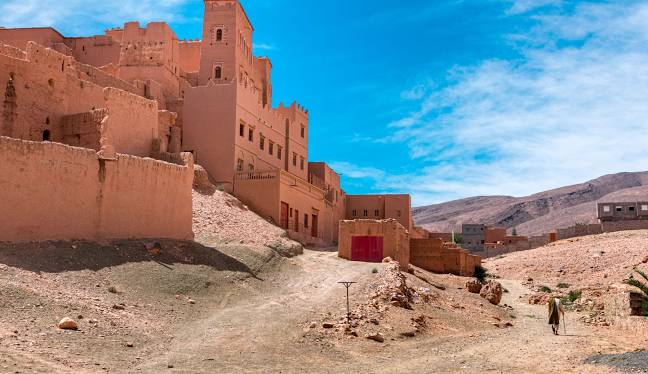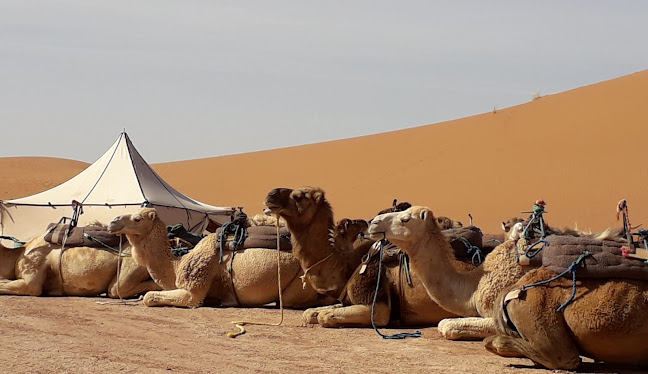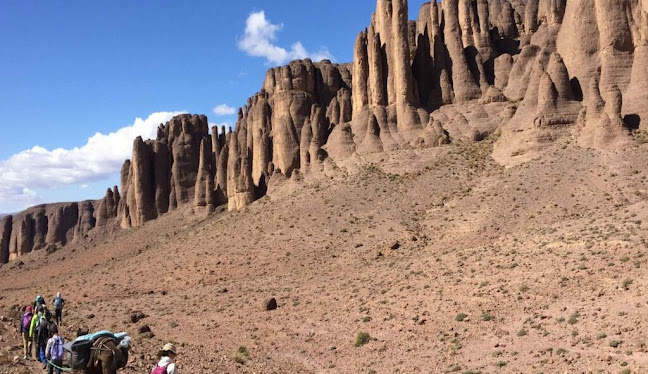Nestled in the Draa River Valley at the edge of the Sahara desert, Zagora, home to Kasbah of Peace, is a small but culturally rich town in southeastern Morocco. Although it is less known internationally than Marrakech or Fes, Zagora offers a unique blend of desert landscapes, ancient history, and Berber culture that draws adventurous travelers and cultural enthusiasts. The town serves not only as a portal to the great Sahara but also as a living museum of Moroccan traditions, spirituality, and desert resilience.
Zagora
Zagora lies within the Draa-Tafilalet region and is surrounded by inspiring geography, including palm groves, arid plains, and the foothills of the Anti-Atlas mountains. Its position near the Draa River gives it both agricultural vitality and historical significance. The river sustains vast date palm plantations and small-scale farming, which have supported local populations for centuries despite the region’s otherwise harsh desert conditions.
The town is often seen as the last stop before venturing into the vast and uninhabitable Sahara. A famous sign in Zagora reads ‘Timbuktu – 52 days’, referring to the length of time it used to take camel caravans to travel from Zagora to Timbuktu, Mali, along ancient trans-Saharan trade routes. While modern transportation has replaced the camel caravan for most travelers, the town still embodies the spirit of exploration and the allure of the desert.
Zagora’s history is closely tied to the development of the trans-Saharan trade, which connected West Africa with the Mediterranean and Europe. Gold, salt, slaves, and other valuable commodities moved along these routes, and towns like Zagora prospered as waystations. The area has been inhabited since prehistoric times, and archaeological remains suggest that it was a crossroads of different civilizations, from indigenous Berbers to Arab settlers who arrived in the Islamic conquests of North Africa.
The region also saw the rise of the Saadian dynasty in the 16th century, who used their control over caravan routes to amass wealth and power. While the town of Zagora itself was smaller and less prominent than other trade cities like Sijilmasa, its strategic location gave it enduring relevance. Many fortified villages and homes dot the area, serving as a testament to the architectural ingenuity and historical legacy of the people who lived there.
Zagora is predominantly inhabited by Amazigh communities, whose language, music, and traditions continue to thrive. The culture is deeply influenced by both pre-Islamic customs and Islamic teachings, creating a rich tapestry of rituals and daily life. Traditional dress, including colorful robes and headscarves, is still common, particularly during festivals and celebrations.
One of the cultural highlights of Zagora is its music and poetry, which often centers on themes of love, desert life, and resistance. Instruments like the three-stringed lute and the frame drum accompany performances that might take place during weddings or in casual settings under the desert stars. Storytelling, both oral and written, is another key part of the local heritage, passed down through generations.
In recent years, tourism has become an important part of Zagora’s economy. Visitors are drawn by the opportunity to embark on camel treks, sleep in Saharan desert camps, and witness the stark beauty of the surrounding landscapes. Popular excursions include trips to the Erg Chigaga dunes, one of Morocco’s two major dune seas, the other being Erg Chebbi near Merzouga. These dunes offer an experience that is less commercialized and more remote than those closer to larger tourist centers.
The town itself hosts a variety of guesthouses, homes, and traditional hammams, blending modern amenities with authentic ambiance. Traditional local markets offer handcrafted goods, from Berber jewelry to ceramics and woven carpets. While Zagora is not as bustling as other Moroccan cities, it provides a quieter and more introspective experience.
Like many desert towns, Zagora faces significant challenges related to climate change, water scarcity, and economic development. The Draa River, once a perennial source of life, now flows only intermittently, affecting agriculture and daily life. Efforts are being made by both local governments and NGOs to promote sustainable practices, including solar energy, water conservation, and eco-tourism.
Another concern is the preservation of cultural heritage in the face of modernization. As younger generations migrate to larger cities or abroad for better opportunities, maintaining traditional knowledge and crafts becomes increasingly difficult. However, there is also a growing movement within the community to document and teach these traditions, both to locals and to curious visitors.
Zagora may not be the most famous destination in Morocco, but it offers something that is increasingly rare, which is the window into a way of life that is closely tied to nature, history, and communal resilience. It is a place where the ancient and the contemporary meet, where the desert is both a barrier and a source of inspiration. For those willing to travel beyond the usual tourist circuits, Zagora promises a deeply enriching experience that captures the soul of southern Morocco.




